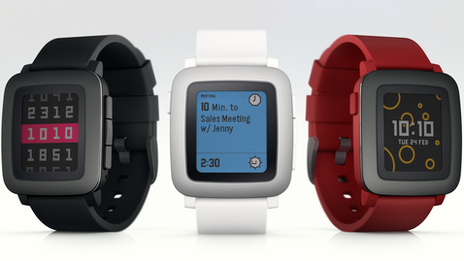Baselworld: Will the watch industry get smart?
- Published
The BBC's Leo Kelion gets hands on with the Kairos watch
Across the watch industry an alarm is sounding.
Attendees at the Baselworld trade fair in Switzerland are wondering whether smartwatches will upend their industry, echoing the way quartz-based watches from Casio, Seiko and other Japanese firms decimated sales of Swiss mechanical watches in the 1970s.
The event's opening press conference featured a flurry of questions on the topic, to the organisers' obvious discomfort.
Baselworld managing director Sylvie Ritter claimed the two sectors were perfectly able to "cohabit", while in the same breath putting down US and Asian tech giants.
"Here we appeal to emotion, there they appeal to marketing," she said.
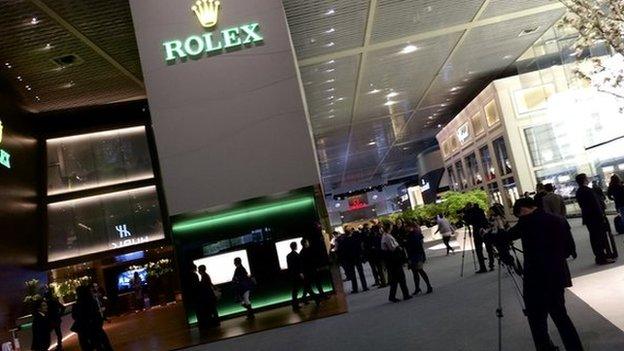
More than 1,500 brands from 40 countries showcase their watches and jewellery at Baselworld
"Here we talk of timelessness, there they talk of planned obsolescence."
Silicon Valley cannibals
Global watch sales surpassed $50bn (£33.6bn) last year, according to market intelligence firm the Digital Luxury Group.
No-one knows how well smartwatches will fare, but the imminent launch of the Apple Watch is leading to forecasts that "wearable tech" could top that figure by 2020.
While some suggest this will be an "additional market", others think there will be a degree of cannibalisation.
"There's going to be a paradigm shift," declares Joe Santana, ex-chief executive of Timex.
"The biggest company in the world with the largest amount of cash that you can imagine has put its eyes on this sector - to think it will stay the same is unbelievable.
"But there is space for others."
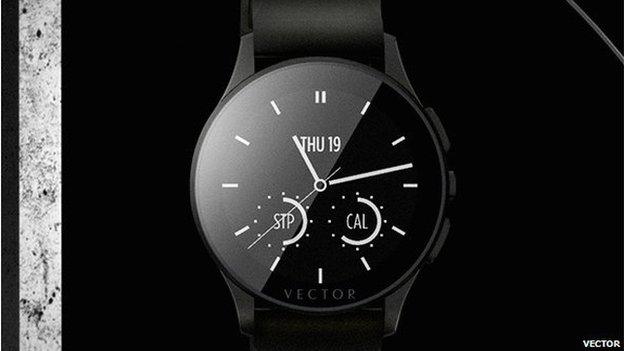
Vector smartwatches track activities, display notifications and tell the time with an always-on display
Mr Santana is at Baselworld to launch Vector, a family of smartwatches that have less functionality than Apple or Android Wear products, but which benefit from much longer battery life.
They achieve this by using a simpler operating system and relying on black-and-white memory-LCD displays - an "always-on" screen technology capable of showing fast-changing, high-resolution images while using relatively little power.
It should mean that someone can use a Vector watch to check hundreds of notifications a day - sent via their iOS, Android or Windows-based smartphone - and still only have to charge it once every 30 days.
"I suffer enough stress on a daily basis already with my smartphone," comments Mr Santana.
"I'm paranoid about running out of juice, so I carry around extra power packs. But I don't believe a lot of people will want to do that with a watch.
"That's where we have an edge."
Smartwatch hybrids
If a month of battery life sounds good, how about a watch that never runs out of power?
That's the promise of another tech start-up, Kairos - well kind of.

Kairos Watches can control music on a linked smartphone, make smart wallet payments, show and respond to notifications and track fitness and sleep
The Korean-US firm is at Baselworld with an unusual proposition: watches that float graphics over mechanical parts.
The mechanical parts - made in Switzerland or Japan, depending on the model - are powered by the movement of the wearer's body, while a separate battery runs the transparent OLED (organic light-emitting diode) screen.
Kairos quotes two-to-three days of use for its screen between charges, based on about 30 interactions a day.
"All-digital smartwatches are always pictured with their displays on, but you can only have their screens on for two to three hours before they go dead," Kairos' chief executive Sam Yang tells the BBC.
"But with ours, even if the screen battery goes dead you still have a nice functioning watch.
"Obviously our prices are higher [$1,190 and up], but we are targeting a niche demographic that is more into traditional watches."
Phone-enhanced wristwear
It's not only newcomers getting involved.
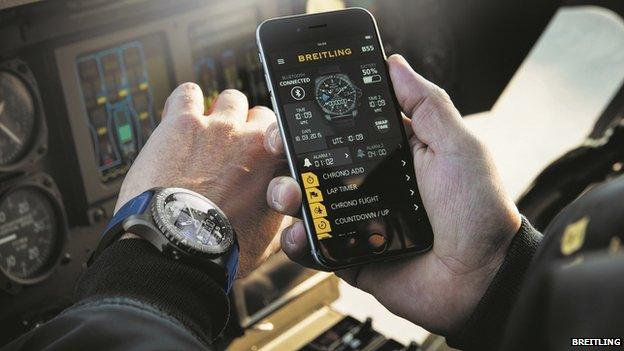
Breitling hopes to put a version of its connected watch on sale before the end of the year
Breitling is showing off a concept watch targeted at airline pilots, which connects to a smartphone via Bluetooth.
The B55 Connected uses the two-way link to automatically adjust its motor-connected watch hands after crossing timezones.
It also lets the owner set watch countdowns and alarms via their phone, and sends flight-time logs entered into the timepiece to an app on the mobile, where they can be stored.
"I think we can enhance user-friendliness of what can be complicated watches," explains Breitling's vice president Jean-Paul Girardin.
"And that's what we want to offer consumers - a real watch with functions that becomes easier to use with the support of a smartphone.

LVMH's Jean-Claude Biver is an iPhone-user, but the firm has partnered with other tech firms for its smart-watch
"It's not to have a new power control for your smartphone on your wrist."
Open to attack
Tag Heuer is taking the opposite approach.
It will unveil a tie-up with two leading Silicon Valley firms this Thursday - rumoured, but not confirmed, to be Google and Intel - to make a fully-fledged smartwatch.
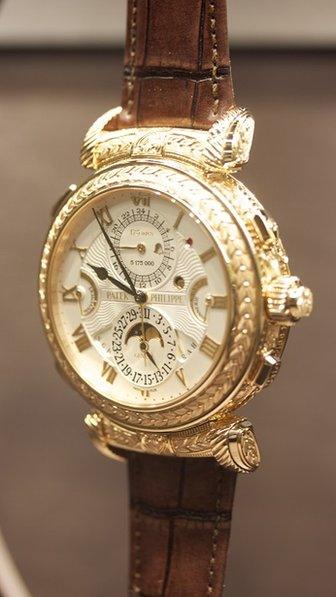
Patek Philippe is not worried that its $2.5m Grandmaster Chime watch cannot run apps
Ahead of the announcement, one of its leaders suggested that competition from the tech sector would take a toll on at least part of its industry.
"I think a watch that is between $300 up to $1,000 - there the customer might hesitate," Jean-Claude Biver, president of LVMH's watch division, told the BBC.
"[They'll say] do I buy a $700 watch that gives me hours, minutes, seconds and date or do I buy a watch that also gives me all the rest?
"The younger generation might choose to have all the rest, so the normal watches in that price category might suffer.
"But as soon as you go above $5,000 they can't be compared."
Sleep-tracking classics
Some firms selling watches in the "danger zone" disagree, and even suggest their sales could rise.
Mondaine, a Zurich-based family-owned business, is one of several brands launching traditional-looking watches at Baselworld that provide fitness and sleep-tracking feedback via an extra sub-dial on their faces.
Data can also be wirelessly sent to a smartphone for closer analysis.
The component involved is replaceable, allowing users to upgrade the tech while keeping the same watch.
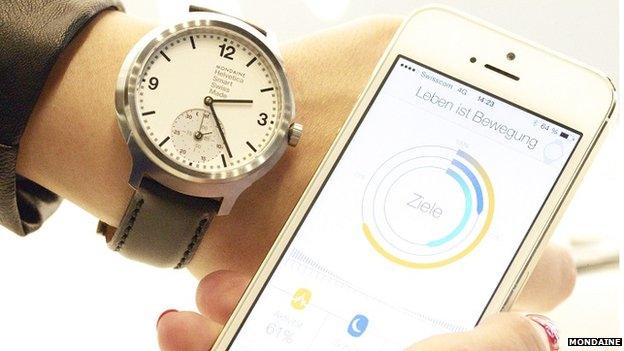
The Mondaine Helvetica incorporates the same MotionX technology used by Nike and Jawbone products
"Frankly I think it's good that people like Apple and Samsung and others are coming into the watch industry," says Mondaine's chief executive Andre Bernheim.
"Younger consumers spend their money on phone bills and not on watches.
"They might be attracted by a digital watch like Apple's or other companies', and that will bring them back to the watch industry.
"One day - we hope and believe - they will feel they've had enough of the digital, blinking stuff, and would like to have a classic watch now that they are used to wearing one."

Fighting the fakes
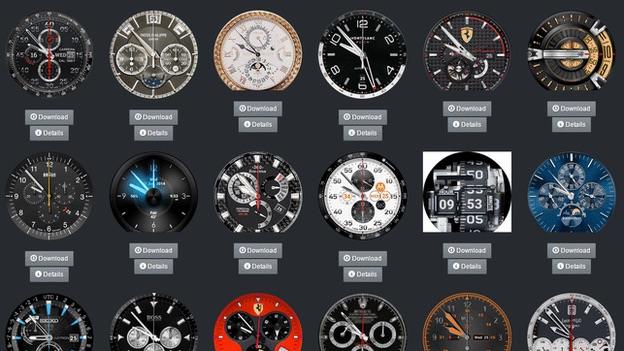
The watch industry has long had a problem with counterfeits.
Smartwatches have introduced a new twist on the problem: digital watch faces that copy the designs of the major brands without their permission.
"We take this problem very seriously," says Jean-Daniel Pasche, president of the Federation of the Swiss Watch Industry.
"Our members have already started different actions against this misuse of copyright.
"We try to find a solution with the infringer, but if not we can sue."

Other tech-enhanced classic watches also on their way.
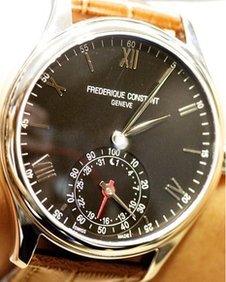
Frederique Constant also has new watches featuring the MotionX-enabled component
Apps v looks
Parts-maker Soprod is to announce at Baselworld that it will build customisable components to let watch firms add smartphone-controlled dials, accelerometers, barometers, and other tech, while preserving battery life of up to 18 months.
"We believe it will add less than $100 [to the cost of a watch], but it will depend on what the brand asks for," reveals Soprod's sales director Cedric Gobetti.
It's clear the watch industry doesn't lack a plan to take on the tech giants - in fact it has several.
But the question remains: will the public be satisfied with tech-enhanced classical designs, or will people want fully-fledged apps on their wrists? If the answer is the latter, traditional watchmakers might still be caught out.
- Published17 March 2015
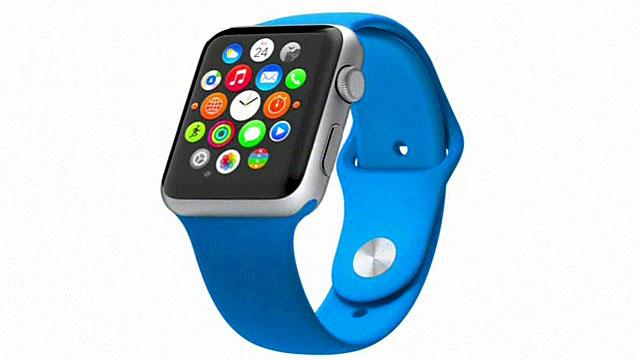
- Published13 March 2015
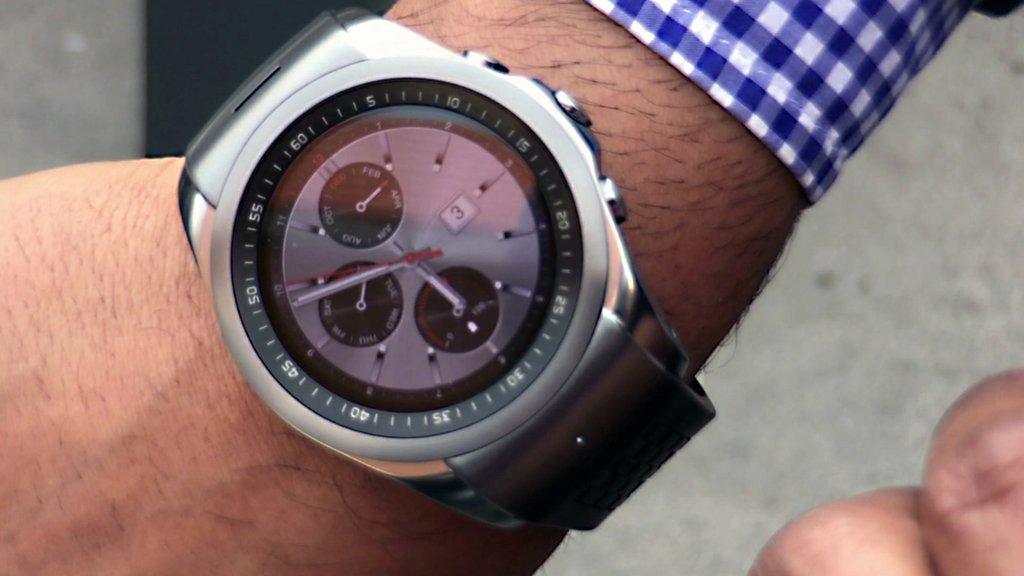
- Published9 March 2015
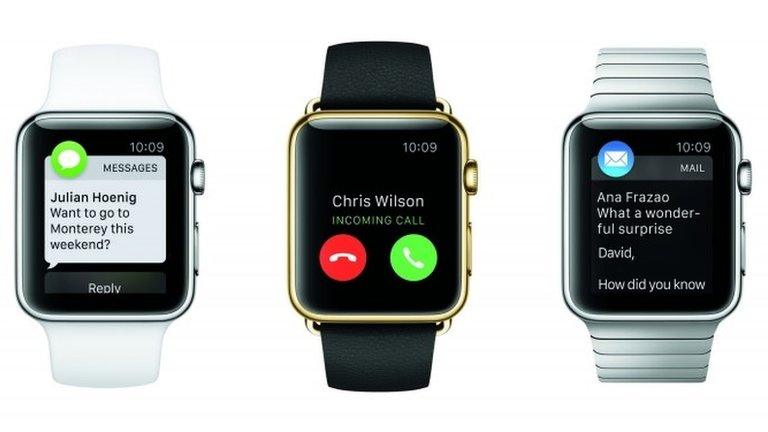
- Published24 February 2015
